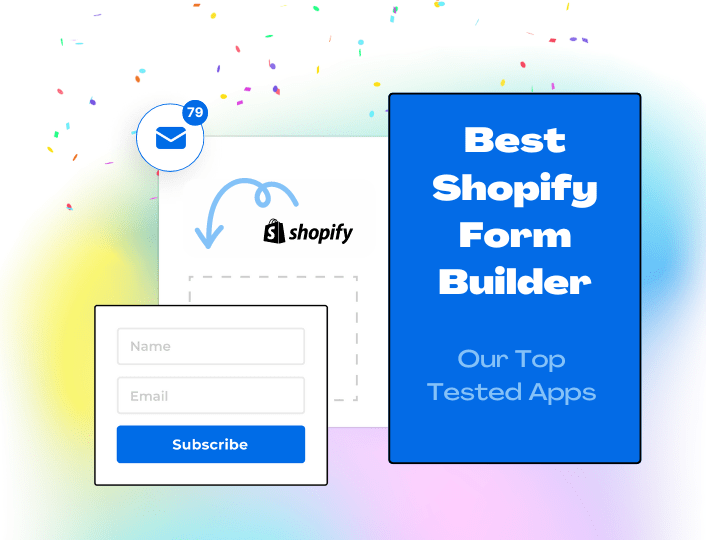The e-commerce industry is competitive. In 2023, sales were projected to reach $1.1 trillion in the United States alone. With so much revenue up for grabs, every business owner wants a bite of the pie.
If you’re new to the market, you have an army of rivals with significant head start. Hence, competitive research – the ingredient that helps you understand how the industry works and know what your target audience wants.
If your business is niched or within a smaller market, it is important to know how to find Shopify stores within your niche. With this, you can understudy their strengths, weaknesses and opportunities to leverage.
This guide walks you through a comprehensive process on how to find Shopify Stores in your niche.
Table of Contents
ToggleWhy Should You Perform Market Research Before Creating Your Store?
1. To know your Competitors and understand your Industry Competition
Use the SWOT (strength, weakness, opportunity and threat) analysis to research your competitors and the industry.
This provides you with insight into the opportunities and market gaps that need to be occupied. You can then build a solid business strategy focused on their weaknesses and flaws.
2. Understand your Customers Better
The more customers your store attracts, the more sales and profit you record. Therefore, know what your customers want, how to market to them and where to find them.
Market research gives you an insight into what your ideal customer wants and what promotional materials are relevant to them.
3. Choose the Best Pricing Strategy
Analyzing your competitor’s product price makes you aware of your customers’ buying limits. Also, it helps you to make better pricing decisions within the market range to avoid overpricing or underpricing your products.
4. Setting Realistic Goals
Researching other stores in your niche helps you to set achievable goals based on market demands and competition. It allows you to estimate the potential size of your target audience, create strategic plans and allocate resources and budgets effectively.
Having covered this, let’s discuss some of the methods to find stores within your niche.
Ways to Find Shopify Stores in Your Niche
1. Search with “…site:myshopify.com” on Google
Often, online stores built on Shopify have “myshopify.com” in their URL. This makes it easy to search for online stores with Shopify.
To fine-tune your search and find specific stores within a niche, you will have to add the keyword plus the “site” prefix to “myshopify.com” to filter your search.
For example, if you are looking for Shopify Pet stores, you’ll need to insert the below phrase into the search bar to give you a comprehensive list of pet stores registered in Shopify.
Insert pet stores site:myshopify.com into the search bar


The keyphrase will feed you a list of competitors with the searched keywords.
2. Make Use of a Profiling Tool
Profiling tools like “Wappalyzer” and “BuiltWith” show you all the technologies a website is built with.
To use it, you can either download it through its Chrome Extension or directly use it on Google.
The Chrome extension is easier and more efficient. To find stores, open the URL of the website you want to analyze, click on your downloaded profiling tool, and gather insights from the feedback it gives you.
For example, we want to find out what website a wedding ring store is built on using Wappalyzer. First, type the store name, then click on the icon.


It will list all the technologies used on the website, sometimes it becomes blank for stores that can’t identify their technologies.
3. Use MyIP.ms Tool
Another useful tool to use is MyIP.ms tool. It uses the IP address to look up stores and gather information about the store.
With this tool, you can know when a site was registered, the IP location, and average visits per day. Most importantly, it tells you what hosting company the site uses – often Shopify.
How does it work? First, you have to visit the site at https://myip.ms/. Next, enter the Shopify IP address in the search bar and you’ll see a list of stores hosted on that IP address.


Moreover, you can find out what hosting services a company uses by typing the company URL into the search bar.
4. Research with Keywords
When you type a keyword into the search bar, the search engine algorithm automatically lists companies that have the keywords in them.


To be more specific about a keyword, you may include the phrase “inurl:”, it will list all companies with the keyword; however, the list is not limited to Shopify stores alone, so you’ll need to use another tool to filter your result.
5. Check for “Powered by Shopify” in the Footer
Powered by Shopify is an indicative message placed on the footer at the bottom of the page. To find stores through this method, scroll down to the bottom of the site to view it.


Unsurprisingly, this isn’t an efficient method. Many Shopify store owners remove it during customization
6. Through Shopify’s Success Story
Shopify has a blog where it shares the success stories of merchants on the platform.
Reading through the success stories of these stores, particularly those in your niche, will help you know who your competitors are and offer successful insight that you can use in your own Shopify store.
Explore the power of Shopify reviews.
7. Leverage Social Media
Social Media platforms like Instagram, Facebook and Pinterest are great sources to discover Shopify stores in your niche. Use hashtags and keywords related to your niche to find posts and profiles of relevant stores.
8. Using Shopify Spy Tools
Shopify Spy tools like Shopgram and Sopistores help you to collect valuable information about your competitors in areas such as their best-selling products and customer insights.
These spy tools come in variants with some purchasable while others are free. Shopify offers its own spy tool.
9. Checking the Source Code
Every website or online store comes with a source code. This is the website’s backend where raw codes are written.
The source code shows you the raw data of how a site is built; in most cases, it shows you where the site is hosted. However, in some stores, this may be absent due to the company’s policy or developer choice.
To view the source code, right-click anywhere on the site page, scroll down to the see source code and click on it to display the backend page. There you will see the link referencing the hosting service provider.
How to Leverage Data Obtained from Analysis/Market Research
You can optimize the data from your “how to find Shopify stores” research to build businesses with enviable YoY profits. How?
1. Data Analysis
Thoroughly analyze the collected data using appropriate tools or software. Don’t have a hang of NVivo, Qualtrics, or Quirko? Enlist a professional’s services. You’d have sufficient insights to improve your strategies and identify patterns, trends and correlations.
2. Identify Opportunities and Challenges
Collected data enables you to see loopholes and gaps in the market, unmet needs or emerging trends that your business can capitalize on. Besides, you can identify potential challenges or obstacles that you need to address.
3. Refine Product/Service Development
Use Insights from your research to refine existing products or develop new ones that align with customers’ needs and preferences. This minimizes the risk of creating offerings that miss the mark.
4. Optimize Marketing Strategies
Tailor your marketing messages, channels and tactics based on the preferences and behavior of your target audience. This increases the effectiveness of your marketing efforts.
5. Competitive Analysis
Analyze your competitor’s strengths and weaknesses based on the market research data. This helps you position your products/services more effectively and identify areas where you can outperform the competition.
Frequently Asked Questions (FAQs)
How can I evaluate the success of these Shopify Stores?
To evaluate the success of Shopify stores in your niche, you can consider factors such as website design, customer reviews, social media engagement, and the range of products offered. Analyze their product description, pricing strategies, and overall branding to gather insights.
How often should I update my research on Shopify Stores in my niche?
Markets and trends can change rapidly, so it’s a good idea to perform this research periodically. Aim for at least once a quarter to stay up-to-date with the latest developments in your niche.
Is it legal and ethical to research competitors this way?
Yes. Competitors’ research is a common and legitimate business practice. As long as you’re using publicly available information and not engaging in any unethical practices – hacking or unauthorized data collection – you’re good to go.
Conclusion
Researching and finding successful Shopify stores in your niche is invaluable to building an online store that fits buyers’ needs.
You don’t have to heft the entire process on your shoulders. Work with tested third-party tools. Pay attention to reviews and feedback about your competitors’ offerings. Analyze data for actionable insights.
Optimize your store to run based on your learnings. When this converts, keep researching to see how to serve your customers better and convert more visitors for massive growth.




